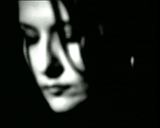
 Author of all texts
about mythology on
these web-pages is
Lidija Bajuk:
Author of all texts
about mythology on
these web-pages is
Lidija Bajuk:
|
lidija.bajuk@posluh.hr
scena.hgu.hr/lidija-bajuk/
- The Sky
- The Mountain
2. PERUNIKA
- Leluya
- Ball lightning
3. AQUARIUS
- Candlemen
WATER MAID
- Fairies
- Witches
4. DRAGON
- Water
SNAKE
- Bogorodica
(Rainbow)
5. GREEN GEORGE
- The Moon
- Corn Spirit
6. LEPA MARA
- Hair
- Embroidery
7. GRABANCIJAŠ
- Light
8. PESJANEK
- Forest
9. LITTLE RED HAT
(DWARF)
- The Cap, Little Hat
10. STRAHE & MRAKI
(GIANTS)
|
DRAGON
(POZOJ, AŽDAJA, (H)ALA, PLAZ, SMUK, UŽ, VILOZMAJ (fairy dragon), ZMAJ/ZMEJ/ZMIJ, ZMAJ GLEDOTVORNI)
|
|
There is a tale of another dragon told by the inhabitants of the Croatian village Donji Vidovec. They describe it differently. Sometimes it is the winged snake or lizard, sometimes the three-headed monster, or a horse with three wings, a water bull, old black cock, wolf of fire or a winged fish. The inhabitants of this northernmost part of Croatia tell that it comes to life in the ooze forming from a fish or a snake that nobody has seen or from a seven-year-old cock. He makes rain and therefore is a fertility god. He guards the cattle in stables and the fire in the fireplace and nourishes the family. In time he becomes the eater of light, kidnapper of girls and nurses, murderer of children and young men, destroyer of the crops. In Croatian, when the weather is bad, it is said that it is the dragon's weather. Sometimes witches ride on the dragon instead on the broom. The secret of his strength is in the egg (the first water) which can be found in a pidgeon which is in the rabbit which is in his body. It is possible that the name for the Christian holiday Christmas Eve, called ''badnjak'' in Croatian and taken from the pre-Christian period, is derived from the word ''budnja noć'', the night of disorder at the end or the bottom of a year. The yule log (''badnjak'') should be burnt because a dragon lives in it and it should be set free in order to become the night or winter deity. With the arrival of spring it leaves the underground and flies up to the mountain, i.e. the Heaven. His fire then becomes thunder and the dragon becomes the deity of heaven. It is good when the dragon remains underground where he guards his treasure: fire and water, love, immortality. He can turn into these things as well. Old Germanic peoples used to believe that a dragon can drop a bag full of presents through the chimney, a story which reminds of the Santa Claus (St. Nicholas) and Father Christmas stories. When he is bad, he can cause drought, earthquake, war, etc. The fight of the good and bad happens inside every individual. This clash of the dual character is obvious in the belief that the dragon was perhaps, at first, only the negative aspect of the sun. The positive aspect being the day or the sky sun (when it is high up in the sky) and the negative aspect being the night or the earth sun (when it sets or weakens in the second part of the year and when it was identified with the moon). The positive and the negative aspects were represented as the sun conquering the dragon or as the dragon devouring the sun. |